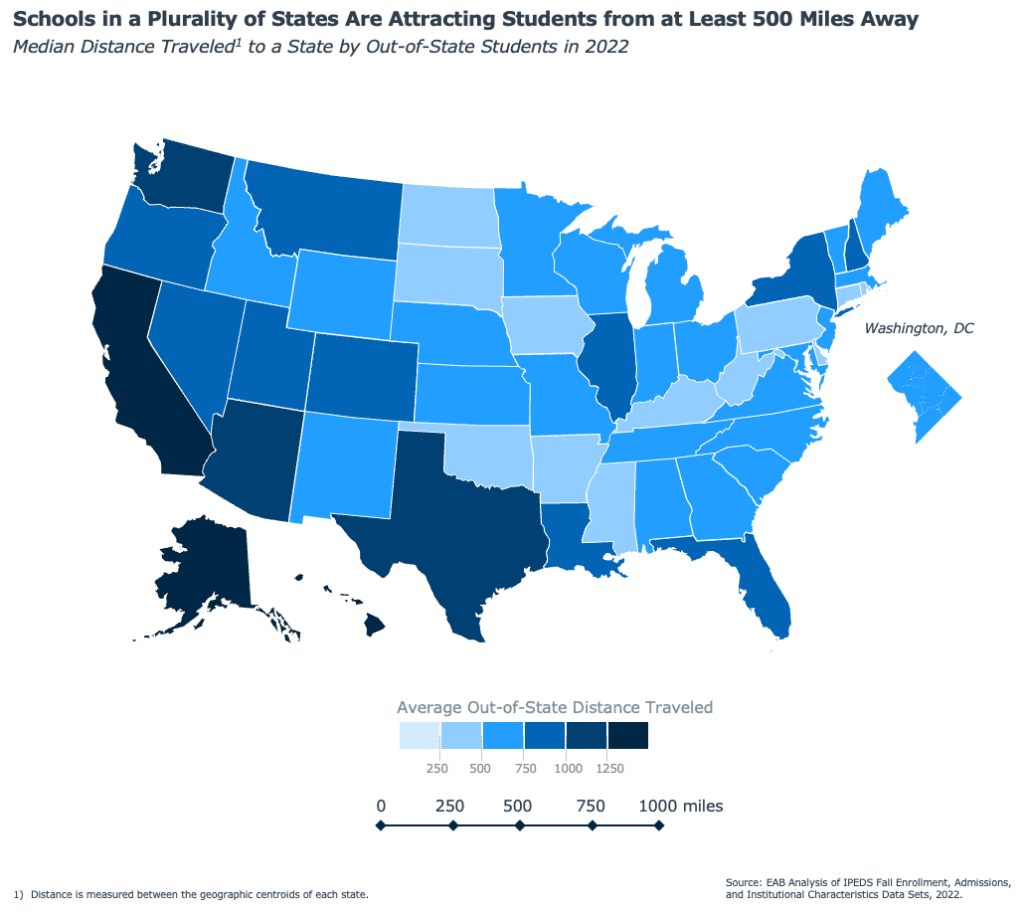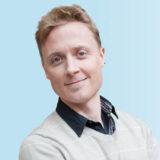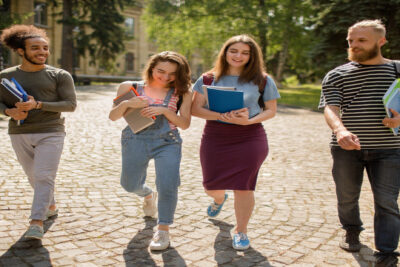How far are students willing to travel to college?
One of the many factors driving students’ choices in the college search process is an institution’s location and proximity to home. This raises the question: how far are students willing to travel for college? Given the significant population shifts underway, as well as changing perceptions about the value of college, gauging the realistic travel distances for students is vital for effective enrollment strategies.
Let’s take a look at some of our updated research into college search trends to understand how students’ willingness to travel has changed—both in terms of how much farther students are traveling and which market segments are seeing the most growth in students from reach markets.
How to Adapt Enrollment Strategies for Changing Student Needs
Most states attracted students from fairly far away
The map below illustrates that in 2022, the average (median) out-of-state student traveled a significant distance to attend college in many states. Specifically, students traveled between 500 and 750 miles to 45% of states, including a notable cluster in the Southeast. This distance often spans multiple states and regions, highlighting a considerable willingness to relocate for higher education.

Interestingly, our research shows some of the states that attract students from quite a bit farther away (i.e., 750 to 1500 miles) also have high in-state enrollment rates, such as Washington, California, Texas, and Florida. This dual attraction suggests that schools in these states are successfully competing on a national scale, drawing both local and distant students.
Students traveled the farthest to attend private schools, but some public schools are close behind
As expected, the average distance students traveled to attend a school in 2022 varies by the institution’s size, sector, and region. Across all five geographic regions, the ranking is:
- Large private schools
- Small private schools
- Large or flagship public schools
- Small or regional public schools

What is perhaps most surprising is the significant distance many out-of-state students traveled to attend public schools—even smaller or regional ones. This trend indicates that all types of schools, regardless of size or status, can attract students from far beyond their immediate geographic area.
Maximizing Reach with a Multifaceted Audience Generation Strategy
Broad growth in students traveling particularly far
To illustrate just how much this willingness to travel has changed since 2018, let’s take it a step further and zoom in on how much growth there was in students traveling 500 miles or more. As you can see on the next map, below, an overwhelming majority of states (84%) saw an increase in how many students traveled at least 500 miles to attend schools there.

Much of the growth is clustered in southern states
Outside of a cluster of states in the Northeast that attracted many more students from afar, there is a noticeable north-south divide in the relative growth and decline of students traveling long distances. Note the string of states from Washington to Minnesota in the north that saw a decline in students traveling the farthest distances to attend schools there. Meanwhile, many of the southern states running from Arizona to Florida and Virginia experienced above-average growth in attracting distant students, highlighting the significant appeal of schools in those regions.
How do demographic shifts intersect with college search trends in your region?
Large public schools vastly outpaced other segments
Breaking down the growth in students traveling more than 500 miles by segment and region reveals some remarkable results. While the absolute distance students traveled on average remained higher for private schools in 2022 (as shown in the previous chart), large and flagship public schools in every region experienced the strongest growth (illustrated in the chart below).

The other three segments also experienced growth in these reach students, albeit to a lesser degree and not uniformly across all regions. However, it’s notable that even small or regional public schools in regions significantly impacted by demographic changes saw an increase in reach students. This was especially evident in the Northeast, which experienced a 21% growth in reach students.
Farther reaching recruitment
These results highlight the significant distances that students are increasingly willing to travel for college. This finding is especially relevant when considered alongside some of the other research we’ve recently published, which shows that schools engaging with high-intent inquiries on platforms like Appily are particularly successful with out-of-state students. When we see that students are traveling farther across all segments and regions—including to smaller schools—it becomes evident that a targeted and sustained outreach strategy can effectively expand the geographic reach of prospect pools. Consequently, even schools most affected by changes in demographics or perceptions of value can adapt their recruitment strategies to capitalize on this opportunity.

More Blogs

What enrollment leaders can learn from Alabama’s statewide direct admissions program

Is your yield rate okay?
